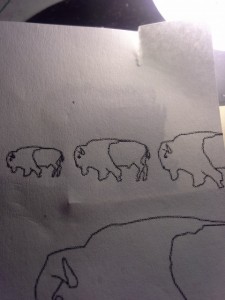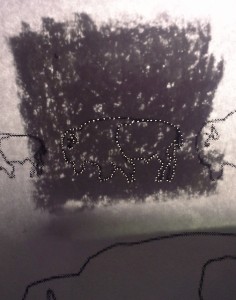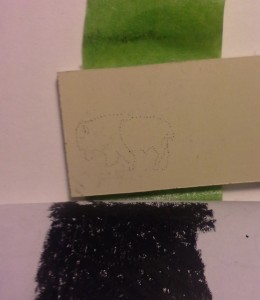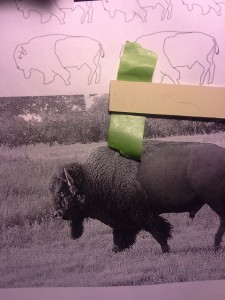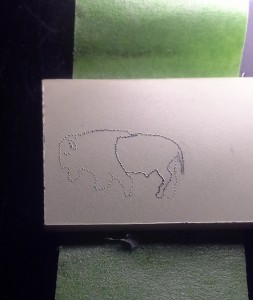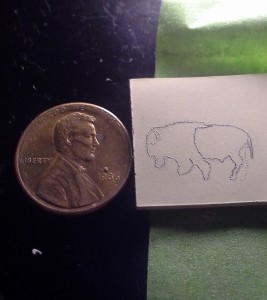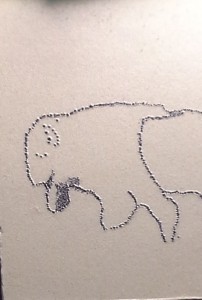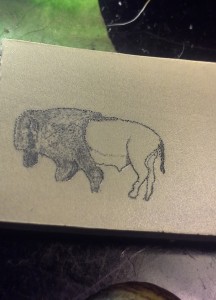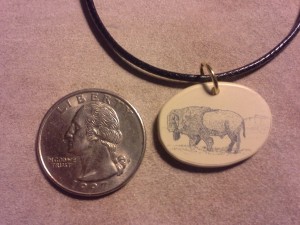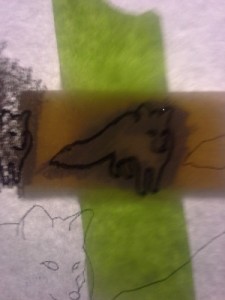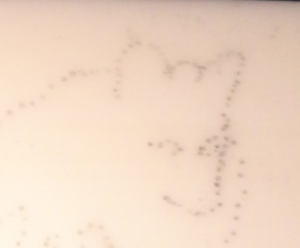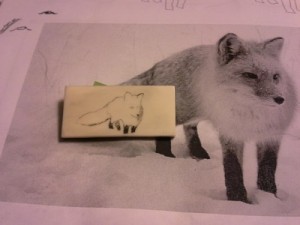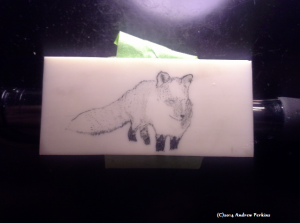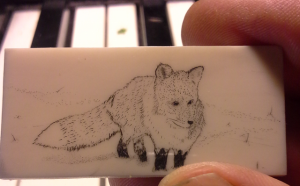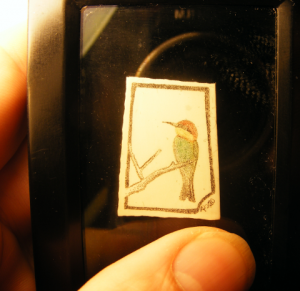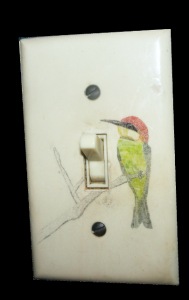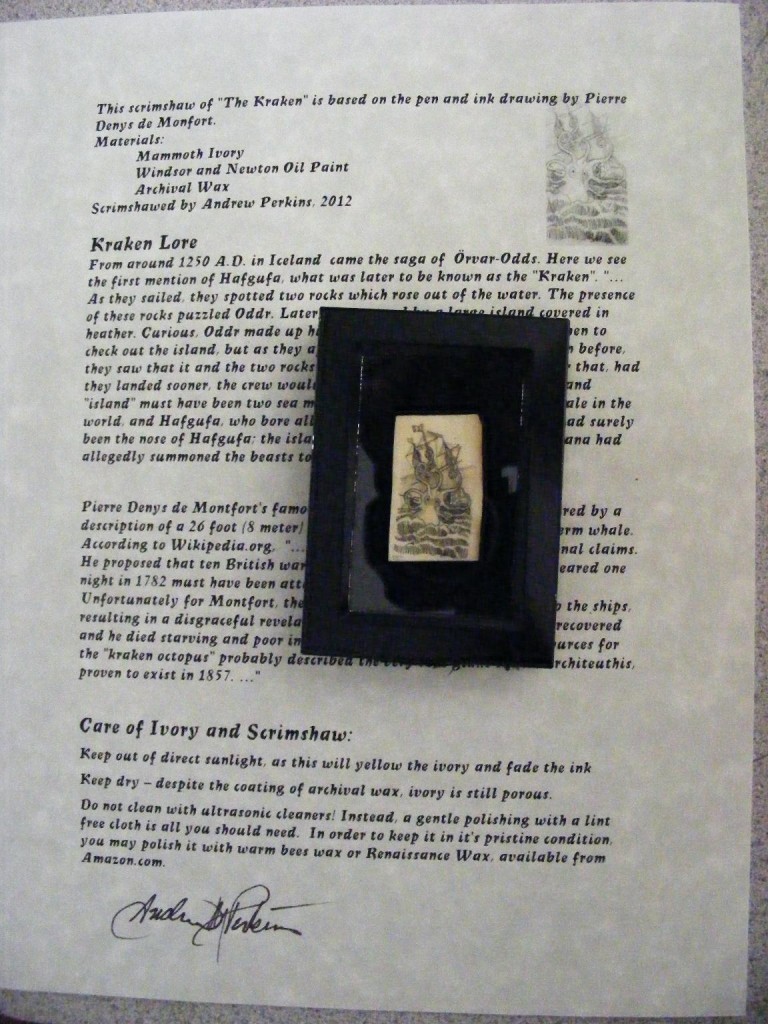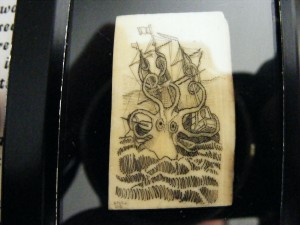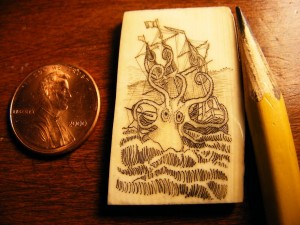Paper Micarta
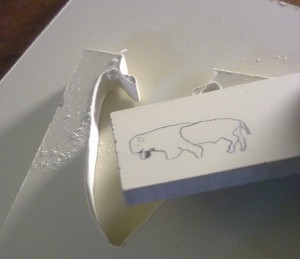 Paper micarta is a composite material made from layers of paper and thermosetting plastic. There are other micartas as well, such as linen micarta and canvas micarta where they mix layers of linen or canvas. These materials are great for knife handles but interferes with scrimshaw since the materials are so thick, and they will wick the pigments. Another micarta like material uses fiberglass (called G10). It is extremely dense and stiff, unlike the Alternative ivory posted in a previous article.
Paper micarta is a composite material made from layers of paper and thermosetting plastic. There are other micartas as well, such as linen micarta and canvas micarta where they mix layers of linen or canvas. These materials are great for knife handles but interferes with scrimshaw since the materials are so thick, and they will wick the pigments. Another micarta like material uses fiberglass (called G10). It is extremely dense and stiff, unlike the Alternative ivory posted in a previous article.
Some people create their own micarta from old denim or paper and epoxy, pressing the materials under as much pressure as they can until dry, then cutting away any excess. This can be a messy and time consuming endeavor (see http://www.instructables.com/id/How-to-make-homemade-micarta/).
Paper micarta is mainly available as ivory, white or black. If you want to create an unique design, you may want to create a deep blue paper micarta and use a white pigment. This is in my bucket list, about the 17th in the line, behind the rest of the overflowing buckets…
Cutting paper micarta requires extremely sharp blades. Another thing you must use is a respirator rated for formaldihyde! This stuff smells terrible, and good ventilation is required as well. Cutting slow, especially with fretsaw blades will allow you to cut intricate patterns in just about any shape. Read through the Material Safety Data Sheet (MSDS) so you know what you are working with. see: http://www.tmxaerospace.com/wcm/idc/groups/internet/documents/web_content/mdaw/mdi5/~edisp/dw022352.pdf for an example, and request a MSDS when you buy.
Paper micarta sands easily, files work well also. Once cut, shaped and wiped clean, paper micarta can be coated with a couple of coats of wood hardener from Minwax, though for this tutorial we’re trying renaissance wax. Polishing up to 3000 grit is highly recommended also (note: if you’re sealing the micarta with minwax wood hardener, polish it with 3000 grit after it has dried; if using renaissance wax, polish it before, apply the wax, then wipe away the excess renaissance wax with a soft cloth).
Most modern paper micarta is of high quality, though if the material is going to be used on a knife handle that will be getting wet, we’d definitely recommend sealing it.
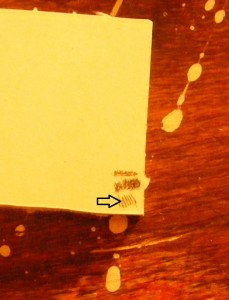 Paper micarta has a similar hardness to ivory, though we have found that it can stain slightly when using pigments due to its texture. We used a stipple technique on the bison using a Coulter scrimshaw scribe and found the material makes slight craters, not unlike softer mammoth ivory [photo]. It takes fine stippling well, and you can create dark areas with little difficulty.
Paper micarta has a similar hardness to ivory, though we have found that it can stain slightly when using pigments due to its texture. We used a stipple technique on the bison using a Coulter scrimshaw scribe and found the material makes slight craters, not unlike softer mammoth ivory [photo]. It takes fine stippling well, and you can create dark areas with little difficulty.
When it comes to scribing, paper micarta comes up short. The filaments of the paper will pull out making the edges of the lines slightly blurry. Clicking on the picture will bring up a larger image.
A very sharp stippling tool works best with paper micarta. If you are doing bolder lines and wish to scribe we’d recommend trying an X-acto type blade that is stropped so it will cut through the paper filaments instead of pulling them out, though we have not worked with this blade personally.
You can find paper micarta at Masecraft Supply in sheets, blocks and rods, as well as many of the knifemaker’s supply houses like USAKnifemaker, Texas Knife Supply, etc.
A good alternative to ivory, especially when it comes to stipple technique. Paper micarta can replace ivory as well as horn for knife handles as well as jewelry pieces. Similar hardness to ivory, it’s only drawback is when it comes to scribing technique where the paper filaments tend to pull and create fuzzy lines instead of clean lines. Takes ink well, oil paint also works – we applied it and immediately wiped it off with no staining if the surface was polished smooth.
Below is a series of pics of a scrimshaw in progress of a buffalo on paper micarta. We’re using the stipple technique to keep the image sharp.
